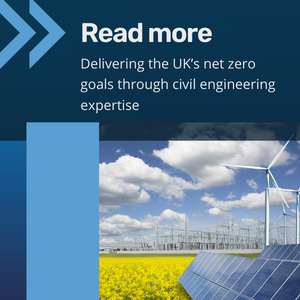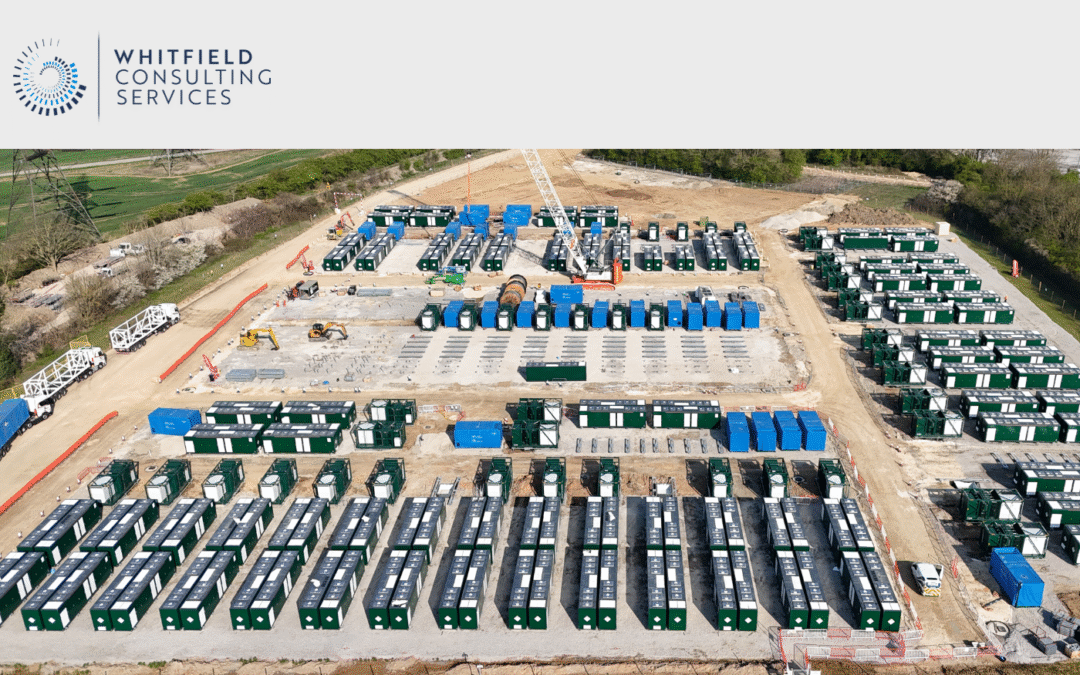Battery Energy Storage Systems (BESS) are becoming a key part of the global shift toward a more reliable, low-carbon energy network. These systems help balance supply and demand on the grid, support renewable generation, and improve overall grid stability.
At Whitfield Consulting Services (WCS), our expertise in civil engineering design is key to the successful delivery of BESS projects. From initial feasibility through to handover, our involvement ensures that installations are structurally sound, safe, and designed for long-term performance.
Let’s gain further insights from Shane Govender, Principal Civil Engineer, who specialises in Power & Energy projects at WCS, including BESS installations.
The foundation beneath every Battery Energy Storage System
Civil engineering design forms the backbone of any BESS project. It supports the physical infrastructure, while also playing a decisive role in enabling safe, timely, and cost-efficient delivery.
“Civil infrastructure underpins all electrical equipment for the site’s entire service life,” says Shane. “It directly affects programme, cost, and key equipment deliveries such as transformers. That’s why early, thorough design is essential.”
WCS’s input spans earthworks, stormwater and firewater containment, equipment foundations, access roads, buildings, security fencing, cable containment, CCTV and lighting – to name a few key areas. Every one of these components is essential to ensure equipment operates as intended throughout the system’s life cycle.
Failure to address these aspects early can result in major risks: project delays, safety issues, unnecessary costs, and misalignment between civil and electrical works. “We prioritise identifying risks early and keeping clear communication with all disciplines,” Shane explains. “It’s about agility in design and continuous collaboration.”
Experience, agility, collaboration: learn more about the WCS approach to civil engineering.
Bridging the gap between design and delivery
WCS’s civil engineering approach is rooted in early and active involvement. From shaping the scope of topographical surveys and geotechnical investigations to producing detailed design documentation, every decision is informed by constructability, site conditions, and regulatory requirements.
One of the key challenges, Shane notes, is “the electrical integration, which is often executed by a separate designer. We bring experience from both sides to reduce ambiguity and improve constructability. Our role is to ensure the civil and electrical elements don’t clash – but complement each other.”
Through regular attendance at progress meetings, site visits, and hands-on engagement, WCS keeps up with changing site conditions and programme pressures. “We’re agile on projects,” says Shane. “We use our internal expertise across disciplines to adapt quickly and keep projects moving forward.”
A key aspect of WCS’s strategy is the focus on temporary works design and coordination: learn more about why these elements are so vital in infrastructure projects.
Real projects, real impact
The Monk Fryston project, SSE Renewables’ largest battery storage project to date, will be one of the largest of its kind in the UK upon completion. Once operational, it will be capable of powering over half a million UK homes for up to two hours. WCS is providing crucial support for this project, working for its client, M Group Energy Services, to ensure the civil engineering design aspects are expertly managed.
Similarly, WCS has been involved from the early stages of a 49.9MW project in Kent, working alongside a high-voltage substation services provider as the client.
WCS has guided the geotechnical work for both sites, helping to determine the most appropriate foundation approaches. At one site, the project utilises a combination of ground-bearing foundations and screw piles, while the other features a mix of ground-bearing foundations, as well as driven and Continuous Flight Auger (CFA) piles.
At a 57MW site in Leicester, WCS acted as resident engineer, applying civil design insights directly on site. “That role allowed us to help the client meet delivery deadlines and speed up aspects of the construction programme – without compromising safety, quality or environmental obligations,” Shane adds.
These projects reflect WCS’s experience in delivering complex, large-scale infrastructure solutions that have a significant impact on energy and power systems across the country.
Sector knowledge, site sensitivity
WCS’s strength lies not just in technical design but in an understanding of how BESS fits into broader energy infrastructure. “Every BESS site connects to a Distribution Network Operator (DNO),” explains Shane. “Our team has wide experience working on both AIS and GIS substations, which makes the grid interface efficient and effective.”
“WCS also supports sustainable practices on BESS projects – for example, by using soil stabilisation techniques to reduce the carbon footprint,” says Shane. “This approach reuses in-situ materials, meaning less haulage and faster delivery. It also improves ground strength, allowing for smaller foundations and reducing the amount of concrete needed.”
WCS’s internal processes also reflect lessons learned from previous BESS projects in both the UK and abroad. Having worked on storage projects in South Africa before joining WCS, Shane brings valuable international insight. “We’ve developed tools and templates from real site challenges,” he says. “My time in South Africa taught me the value of being adaptable and detail-focused – those lessons translate directly into our UK work.”
WCS is proud to support the projects that are powering the UK’s transition to renewable energy. See our downloadable case study brochure for the Power & Energy sector, detailing projects including Dogger Bank, the world’s biggest offshore wind farm. Plus read part one and part two of our recent projects won series, including our work on Hornsea 3 and London Power Tunnels 2.
From feasibility to end-of-life
WCS’s role often begins long before construction. The team has conducted feasibility studies for large sites in remote areas, assessing acoustic impacts, ecology, and visual considerations. “It’s easier to guide surveys when you understand what needs to be built,” Shane points out.
Drainage and material strategies also account for long-term sustainability. “We design to manage contamination, and we think about rehabilitation from the outset – since BESS sites need to be restored to their original state at the end of their service life.”
A partner you can rely on
At WCS, delivering BESS infrastructure is about more than meeting a spec. It is about shaping a reliable, functional foundation for critical power systems. “I’ve always been drawn to electrical and mechanical systems,” says Shane. “BESS gives us the chance to work at the intersection of sustainability and infrastructure. It’s exciting to be part of that.”
Battery energy storage plays a vital role in the UK and ROI’s clean energy goals. But to deliver on its promise, it needs civil engineering that is precise, responsive, and rooted in real-world experience. That is where WCS makes the difference.
To find out more about our Power & Energy experience click here. Or, if you would like to discuss your next project, please get in touch by emailing info@wcs-consult.co.uk or calling +44(0)20 3581 7847.

